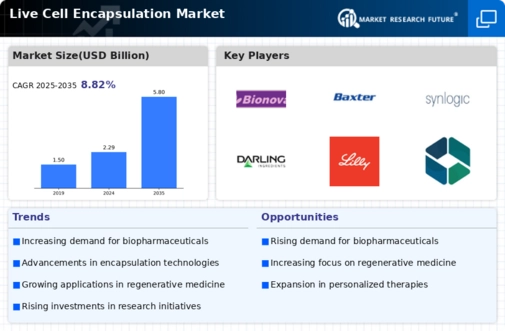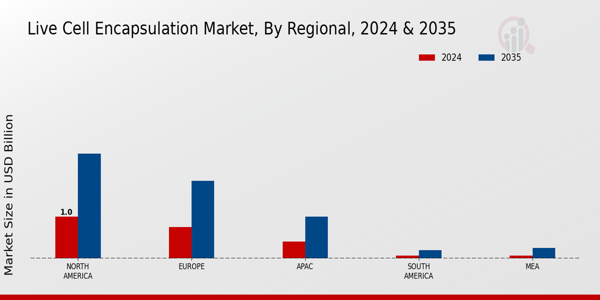Market Trends
Key Emerging Trends in the Live Cell Encapsulation Market
The Live Cell Encapsulation Market is evolving rapidly due to increased interest in cell-based therapeutics and regenerative medicine. Live cell encapsulation, which immunoisolates living cells, has several medical applications. The emergence of cell-based therapeutics is transforming the live cell encapsulation industry. Researchers are seeking novel cell-based therapeutics. Encapsulation brings these cells safely to their destinations. This improves drugs. For diabetes treatment, live cell encapsulation is becoming increasingly popular. Since encapsulated pancreatic islet cells produce limited insulin, they may help regulate diabetes and blood sugar levels without external insulin. Cell-enclosing biomaterials improve constantly. New polymer science and material engineering breakthroughs produce safe, immune-protective materials that improve packed cell performance and longevity. Live cells must be enclosed with immunoprotection and biocompatibility in mind. Packaging methods that protect cells from the immune system and extend their lifespan are being developed. Packaging live cells via microencapsulation is getting increasingly prevalent. Microcapsules, beads or particles, protect cells while allowing nutrients and waste to pass. This trend helps cells survive and medicines operate better. Live cell packing may cure neurological illnesses, say researchers. Encapsulating neurons during transplantation protects them. This provides regulated delivery to central nervous system locations and may treat Parkinson's and Alzheimer's. Collaborations between research organizations, pharmaceutical companies, and universities improve live cell packing. Working together speeds up research and development by sharing information, resources, and money. Certain contained cell therapies have completed clinical trials and received regulatory approval, therefore beginning commercialization. This suggests that live cell encapsulating technologies are improving and might be utilized to provide therapy options. Cell replacement therapies use live cell encapsulation to repair or replace damaged organs or tissues. Encapsulated cells, including those that generate insulin for diabetes or dopamine for Parkinson's disease, may provide long-term therapy advantages. Legal considerations become crucial when live cell packing approaches medical usage. Following regulators' requirements is a priority, and packed cell treatment guidelines and guides are being created. Combining 3D printing with other technologies is a trend in live cell packaging. Precision packaging with complicated forms may be manufactured using 3D printing. These devices enhance cell dissemination and enable individualized therapy. As research and encapsulation technologies spread, the global live cell encapsulation market grows. It seems that packed cell therapies are becoming more well known for their therapeutic properties. Medical uses for live cell packing are growing, thus it's vital to create more of them. Scalable manufacturing approaches for packed cell therapies are a trend.














Leave a Comment